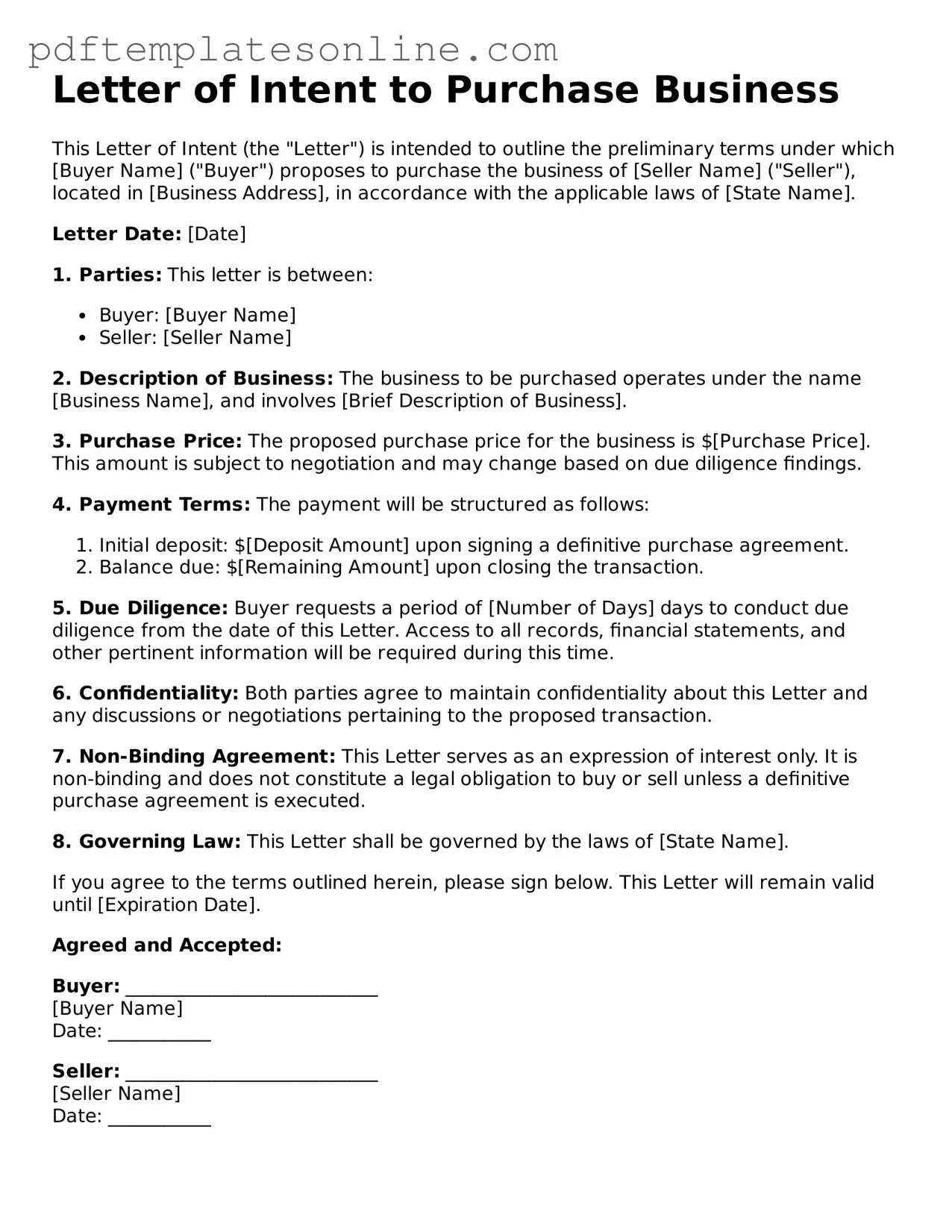Filling out a Letter of Intent to Purchase Business form is a crucial step in the process of acquiring a business. However, many individuals make common mistakes that can lead to complications later on. One frequent error is failing to include all necessary details about the business being purchased. Omitting key information, such as the business name, address, or specific assets involved, can create confusion and hinder negotiations.
Another common mistake is not clearly defining the terms of the offer. It is essential to outline the purchase price, payment terms, and any contingencies. If these terms are vague or incomplete, it may lead to misunderstandings between the buyer and seller. Both parties should have a clear understanding of what is being proposed.
Additionally, some individuals neglect to specify the timeline for the transaction. A lack of a defined timeline can result in delays or misaligned expectations. Establishing a clear timeframe helps keep the process on track and ensures that both parties are aware of important deadlines.
Many also overlook the importance of including a confidentiality clause. This clause protects sensitive information about the business from being disclosed to outside parties. Without it, proprietary information may be at risk, which could undermine the business’s value and competitive advantage.
Finally, not seeking professional advice can be a significant oversight. Engaging with a legal expert or a business advisor can provide valuable insights and help avoid costly mistakes. Professional guidance ensures that the Letter of Intent is comprehensive and legally sound, paving the way for a smoother transaction.
